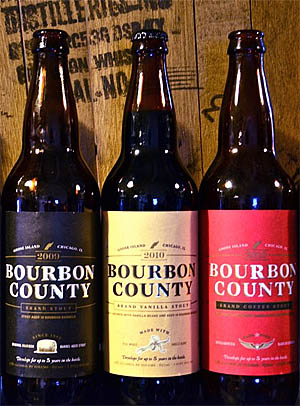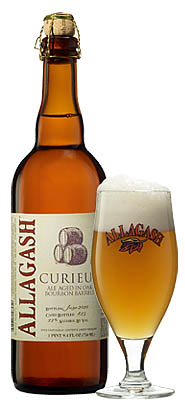5 Favorite Barrel-Aged Beers
Modern breweries traditionally use steel or copper tanks to age their brews, but by now, most craft beer drinkers have had a chance to sample a beer that has been aged in wooden barrels instead. Although used historically to great effect in Belgian sours and traditional Lambic and Flanders beers, it was only recently that modern American brewers widely adopted the practice.
One legend begins with Dougal Sharp of Scottish brewery Innis & Gunn. The original Innis & Gunn beer was "born by accident" during a distillery's quest to create a whiskey finished with ale flavors. Sharp created an ale that was stored in the barrels before liquor was placed in them for aging, at which point the beer was discarded.
 But, it turns out workers on the distillery floor had been drinking the aged ale, and one day they told Sharp how good it was. Upon discovering that, he quit his job and took a year to perfect this new beer, bringing forth the style of barrel-aged beer.
But, it turns out workers on the distillery floor had been drinking the aged ale, and one day they told Sharp how good it was. Upon discovering that, he quit his job and took a year to perfect this new beer, bringing forth the style of barrel-aged beer.
It's a good story, but the fact is that some U.S. breweries had already begun this practice, such as Goose Island, which brewed the first batch of its barrel-aged Bourbon County Stout in 1992.
However the trend began, more and more brewers are becoming enamored with the flavors and nuance that comes from aging in wine, bourbon, whiskey, or even sake barrels. These days, barrel-aged offerings come from companies as large Budweiser, from large craft breweries like Samuel Adams, and from micro-brewpubs like Baltimore's Oliver Breweries.
Stouts, dopplebocks, and barleywines are typical candidates for barrel aging, because their malt character stands up nicely against the strong flavors oak barrels usually exhibit. Here we take a look at some classic examples of the style.
Bourbon County Stout: As mentioned above, Chicago's Goose Island first brewed this big stout (14.5 percent ABV) back in 1992. It pours "as dark and dense as a black hole with thick foam the color of a bourbon barrel," according to the brewery's web site. Even better "one sip has more flavor than your average case of beer."
Black Note Stout: This stout brewed by Bell's Brewery in Michigan comes in at 11.5 percent ABV. It's the blend of an Expedition Stout and Double Cream Stout (how can it be bad?), aged in freshly retired oak bourbon barrels for months. The result is malty notes of dark chocolate, espresso, and dried fruits.
 The Angel's Share: As a personal side note, this was the first bourbon barrel-aged beer I ever tried. The name comes from the tradition of whiskey distillers who refer to the evaporation of spirits from their barrels as "The Angel's Share." This Strong Ale (12.5 percent) from California's Lost Abbey ages for a year in oak barrels (bourbon or brandy) before being let loose on the world.
The Angel's Share: As a personal side note, this was the first bourbon barrel-aged beer I ever tried. The name comes from the tradition of whiskey distillers who refer to the evaporation of spirits from their barrels as "The Angel's Share." This Strong Ale (12.5 percent) from California's Lost Abbey ages for a year in oak barrels (bourbon or brandy) before being let loose on the world.
Curieux: To make Curieux, Allagash takes their Triple Ale and ages it for eight weeks in a cold Maine cellar in Jim Beam bourbon barrels. They then mix the aged beer with a portion of fresh Triple. The result? A big, 11 percent ABV beauty that tastes of vanilla, sweet fruit, and, of course, bourbon.
Calabaza Blanca: Michigan's Jolly Pumpkin ages all its beers in oak barrels. They believe that "this contact with the wood gives beers unmatched depth of character, and subtleness of flavor." The Calabaza Blanca, a Belgian Biere Blanche, is aged in oak barrels and subsequently refermented in the bottle. Coming in at just 4.8 percent ABV, this is one of the lowest alcohol barrel-aged beers I found. It has been described as refreshing, with earthy, funky, sour flavors and taste.
— Helene Golombek, The Drink Nation
Related Links:
Spirits Review: Dad's Hat Pennsylvania White Rye